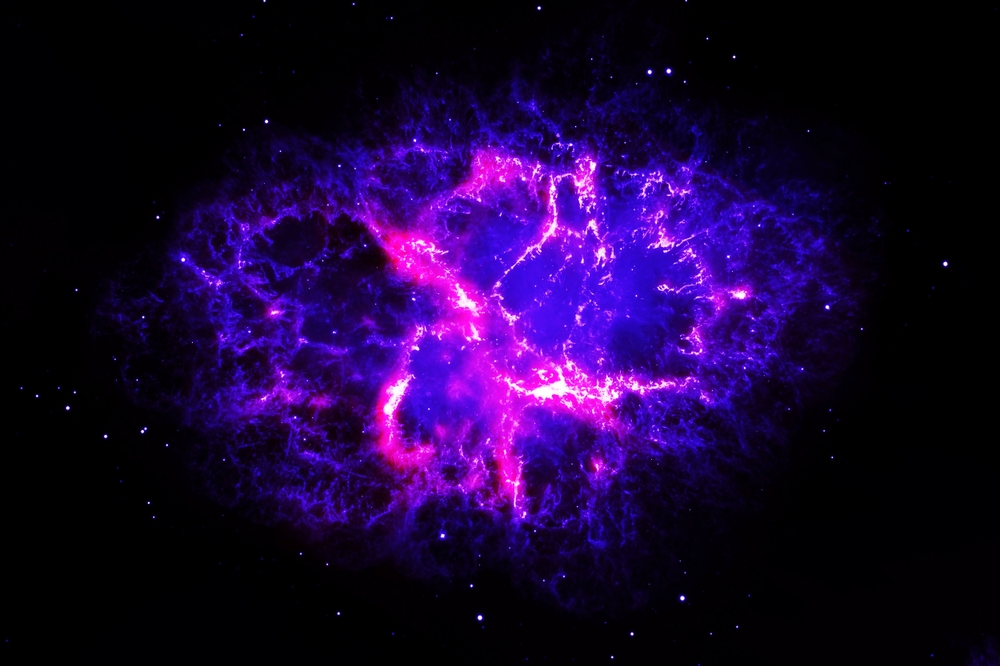
WWW.DISCOVERMAGAZINE.COM
A Dazzling Burst of Radio Waves Ignited Near a Dead Star
In a brilliant development, scientists have discerned the origins of a fast radio burst borne from the magnetic surroundings of a dead neutron star. Its sighting can be traced to a curved glint of light originating from a faraway galaxy. New research from a study in Nature on this luminous phenomenon has issued an updated perspective on fast radio bursts short-lived explosions of radio waves that release an abundance of energy.Fast Radio Burst 20221022AA fast radio burst (FRB), thought to stem from compact astronomical objects like neutron stars (a supergiant star left behind from a supernova) and potentially black holes, produces a scintillation that has continuously caught the eyes of astrophysicists. The gleam of light, although only lasting for a thousandth of a second, is powerful enough to outshine an entire galaxy.Researchers have been keen on solving the mysteries behind the creation of FRBs since their initial discovery in 2007, and they have recently cornered one in particular that yielded exciting results. A team of astronomers at MIT released the study that points to FRB 20221022A, a previously discovered FRB from a galaxy about 200 million light-years away.This FRB is so special because its distinctive foundation presents a new look at how these outbursts of energy form.The Debate Over FRB LocationFor years, questions have loomed over the specific forces behind FRBs and where they materialize. Scientists have wanted to know if FRBs are primarily formed close to a source or far away from a source. The new study seems to move the needle in a certain direction.The research team that analyzed FRB 20221022A has claimed it originated close in proximity to its source, having arisen around 10,000 kilometers away from a rotating neutron star. The birthplace of the FRB, they assert, was likely in the neutron stars magnetosphere a magnetized region surrounding an astronomical object. Previously, skepticism surrounded the possibility of a radio burst escaping the intense environment of a magnetar, a neutron star with a powerful magnetic field. The case of FRB 20221022A deviates from one previous model suggesting that FRBs instead occur as part of shockwaves that are pushed out further from a compact astronomical object.To collect more evidence on the unresolved origins of FRBs and confirm whether they form close to objects like neutron stars or far away from them the researchers turned to the Canadian Hydrogen Intensity Mapping Experiment (CHIME), a radio telescope in British Columbia containing four half-pipe shaped reflectors. By receiving radio waves from hydrogen in space, CHIME has picked up thousands of FRBs across the universe.The Meaning of Scintillation The whereabouts of FRBs have been considered through their scintillation an effect wherein light filters through some medium like gas within a galaxy. When starlight passes through gas, for example, it bends in ways that make it appear as if a star is twinkling in the night sky.The researchers applied measurements of scintillation to determine the relative size of the region from where the FRB appeared. They claim that a smaller region would correlate with the burst occurring closer to the source (and likely within a neutron stars magnetosphere), and a larger region would correlate with the burst occurring far away from the source.This is when FRB 20221022A, first detected in 2022 by CHIME, came into the picture. Although its brightness was standard, another research team from McGill University noticed that it possessed one significant trait: the light from the burst was highly polarized, and the angle of polarization generated an S-shaped curve. This means that the FRB emission site is rotating, which usually happens in pulsars (rapidly rotating, magnetized neutron stars).Getting a Close-up of an FRBThe unique pattern of polarization suggests that the signal from the FRB may have originated close to a neutron star.Using this knowledge as a springboard, the MIT researchers worked to prove the close proximity of the FRB to its source. Analyzing data from CHIME, they found that gas from the FRBs host galaxy was filtering the radio waves and causing them to bend. The gas, prompting some of the scintillation, allowed the researchers to zoom in on the FRB site and confirm that the burst came from a very small region, estimated to be about 10,000 kilometers wide.The results from the new study, along with the additional findings from the McGill team, show for the first time that FRBs can emerge close to a neutron stars turbulent magnetosphere. Given that CHIME collects evidence of multiple FRBs daily, there are plenty more opportunities to uncover the origins of different bursts in the universe. Going forward, evaluating scintillation will become a vital method as researchers continue to seek answers on the creation of FRBs.Article SourcesOur writers at Discovermagazine.com use peer-reviewed studies and high-quality sources for our articles, and our editors review for scientific accuracy and editorial standards. Review the sources used below for this article:NASA. Neutron Stars Are Weird!Jack Knudson is an assistant editor at Discover with a strong interest in environmental science and history. Before joining Discover in 2023, he studied journalism at the Scripps College of Communication at Ohio University and previously interned at Recycling Today magazine.
0 Reacties
0 aandelen
138 Views


